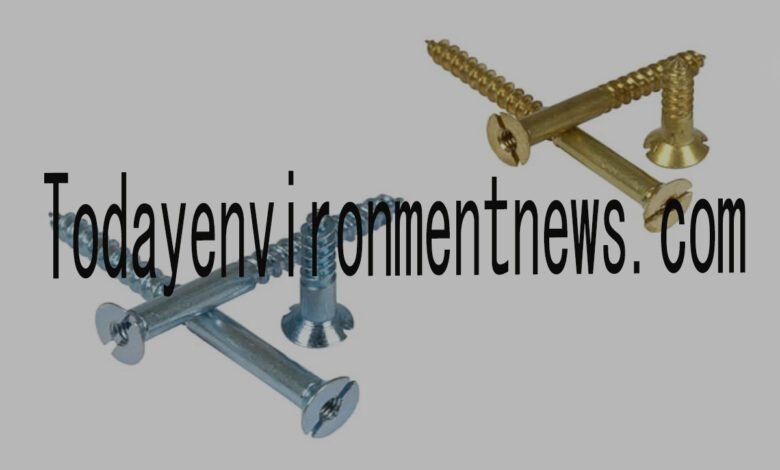The Complete Guide to Tiny Screws: Everything You Need to Know

Introduction
When precision matters and space is limited, tiny screws become the unsung heroes of countless applications. From smartphones to medical devices, these miniature fasteners play a crucial role in holding together the technology and tools we rely on daily.
Whether you’re an engineer designing compact electronics, a hobbyist working on model trains, or a professional repairing delicate instruments, understanding tiny screws can make the difference between success and frustration. This comprehensive guide will walk you through everything you need to know about these small but mighty fasteners, from their various types and applications to expert tips for working with them effectively.
By the end of this post, you’ll have the knowledge to select the right tiny screw for any project and the confidence to handle these delicate components with precision.
What Are Tiny Screws: Uses and Importance
Tiny screws are precision fasteners typically measuring less than 6mm in diameter and often shorter than 10mm in length. Despite their diminutive size, these components serve critical functions across numerous industries where space constraints demand miniaturized solutions.
The importance of tiny screws extends far beyond their size. They enable the compact design of modern electronics, allow for precise assembly in medical devices, and provide secure fastening in applications where traditional screws simply won’t fit. Their small form factor doesn’t compromise their holding power—many tiny screws can support significant loads relative to their size.
These fasteners have become increasingly vital as technology continues to miniaturize. Without reliable tiny screws, we wouldn’t have smartphones that fit in our pockets, hearing aids that are virtually invisible, or complex surgical instruments that can perform delicate operations.
Types of Tiny Screws: Materials, Head Types, and Drives
Materials
The material composition of tiny screws varies depending on their intended application and environmental requirements.
Stainless Steel remains the most popular choice due to its excellent corrosion resistance and strength. Grades like 316 and 18-8 stainless steel offer superior performance in challenging environments while maintaining the precision required for tiny applications.
Brass tiny screws provide good electrical conductivity and corrosion resistance, making them ideal for electronic applications where conductivity matters.
Titanium offers the highest strength-to-weight ratio, though at a premium price point. These screws excel in aerospace and high-performance applications where every gram counts.
Plastic screws serve specialized purposes where metal might interfere with sensitive electronics or where insulation is required.
Head Types
The head design of tiny screws must balance functionality with the constraints of limited space.
Pan heads provide a low profile while offering sufficient surface area for screwdriver engagement. They’re commonly used in electronics where clearance is tight.
Socket head cap screws offer high torque capability in a compact design, though they require specialized hex keys for installation.
Flat head (countersunk) screws sit flush with surfaces, making them perfect for applications where protruding hardware isn’t acceptable.
Round heads distribute clamping force evenly and resist stripping, though they require more vertical clearance.
Drive Types
The drive system determines how you’ll install and remove tiny screws.
Phillips drives remain popular for general applications, though they can be prone to cam-out at small sizes.
Slotted drives offer simplicity but provide limited torque transfer and can be difficult to align properly.
Hex socket drives deliver excellent torque transfer and resist cam-out, making them ideal for high-precision applications.
Torx drives provide superior grip and reduce the risk of stripping, especially important when working with delicate tiny screws.
Applications of Tiny Screws Across Various Industries
Electronics and Technology
The electronics industry represents the largest consumer of tiny screws. Smartphones contain dozens of these fasteners, securing everything from circuit boards to camera modules. Laptop computers, tablets, and wearable devices all rely on tiny screws for assembly while maintaining their sleek profiles.
Circuit board mounting represents a critical application where tiny screws secure PCBs to housings while maintaining proper spacing and electrical isolation. The precision required in these applications demands screws with tight tolerances and consistent threading.
Medical Devices
Medical applications require tiny screws that meet stringent biocompatibility and sterilization requirements. Surgical instruments, implantable devices, and diagnostic equipment all utilize specialized tiny screws designed for the demanding healthcare environment.
Dental applications particularly benefit from tiny screws, where space limitations and the need for corrosion resistance make them essential for brackets, aligners, and specialized dental tools.
Aerospace and Defense
Weight reduction drives the use of tiny screws in aerospace applications. Every ounce matters when designing aircraft and spacecraft, making lightweight titanium tiny screws valuable for securing non-critical components.
Military equipment often operates in harsh environments, requiring tiny screws with enhanced corrosion resistance and temperature stability.
Precision Instruments
Watchmaking remains a traditional application for tiny screws, where craftspeople have relied on these precision fasteners for centuries. Modern precision instruments like optical equipment, scientific devices, and measuring tools continue this tradition.
Model making and hobbyist applications have grown significantly, with remote control vehicles, scale models, and DIY electronics projects all benefiting from readily available tiny screws.
How to Choose the Right Tiny Screw for Your Project
Selecting the appropriate tiny screw requires careful consideration of several factors that will determine long-term performance and reliability.
Load requirements should be your first consideration. Calculate both the static and dynamic loads your screw will experience. While tiny screws may look delicate, properly selected ones can handle surprising loads.
Environmental conditions significantly impact material selection. Moisture, temperature extremes, and chemical exposure all influence which materials will perform best over time. Stainless steel works well for most environments, but specialized applications may require titanium or exotic alloys.
Space constraints dictate both head type and overall screw dimensions. Measure available clearance carefully, remembering to account for tool access during installation and potential future maintenance.
Torque requirements help determine drive type and head style. Applications requiring high torque benefit from hex socket or Torx drives, while low-torque applications can use simpler Phillips or slotted drives.
Thread specifications must match your application exactly. Metric threads are becoming more common in modern applications, while older equipment may require imperial sizing. Thread pitch becomes critical at small sizes where even minor variations can cause binding or poor engagement.
Tips for Working with Tiny Screws: Installation and Removal
Working with tiny screws requires patience, proper tools, and specific techniques to avoid frustration and damage.
Tool selection makes all the difference when handling tiny screws. Invest in high-quality precision screwdrivers with comfortable grips and exact-fit tips. Magnetic tips can help with screw placement, but be cautious around sensitive electronics.
Lighting and magnification become essential when working at this scale. A well-lit workspace with adjustable magnification helps prevent eye strain and ensures accurate placement. LED ring lights or illuminated magnifying glasses work particularly well.
Organization is crucial when working with tiny screws. Use compartmented trays or magnetic parts dishes to keep screws sorted and prevent loss. Take photos before disassembly to reference original screw placement and orientation.
Installation technique requires a gentle touch. Start threads by hand whenever possible to prevent cross-threading. Apply minimal initial pressure while turning counterclockwise until you feel the screw drop slightly—this indicates proper thread alignment.
Torque control prevents damage to both screws and threaded holes. Most tiny screw applications require very light torque. When in doubt, err on the side of caution. Stripped threads in tiny components often mean complete part replacement.
Removal techniques for stubborn tiny screws include gentle heat application, penetrating oil, and specialized extraction tools. However, prevention through proper installation usually eliminates removal problems.
Where to Buy Tiny Screws: Selecting a Reliable Supplier
Finding quality tiny screws requires identifying suppliers who understand precision hardware and maintain strict quality standards.
Specialized fastener distributors typically offer the best selection and technical support. These suppliers understand the unique requirements of tiny screws and can provide detailed specifications and application guidance.
Industrial suppliers often carry tiny screws but may focus on larger volumes and industrial applications. They can be excellent sources for standard sizes and materials.
Online marketplaces provide convenience and competitive pricing but require careful attention to specifications and seller reputation. Always verify thread pitch, material grades, and dimensional tolerances when ordering online.
Local electronics stores sometimes carry common tiny screws used in consumer electronics repair. While selection may be limited, they offer the advantage of immediate availability.
When evaluating suppliers, consider their quality control processes, technical support availability, and ability to provide detailed specifications. Reputable suppliers should offer clear return policies and be willing to discuss application requirements.
Bulk purchasing can provide significant cost savings, but ensure you have proper storage to prevent corrosion and damage. Small quantities allow for testing and verification before committing to larger orders.
Frequently Asked Questions
What’s the smallest screw size available?
The smallest commonly available screws measure approximately M0.6 (0.6mm diameter) with specialized applications using even smaller sizes down to M0.3. However, these ultra-small sizes require specialized handling and installation tools.
Can tiny screws be reused safely?
High-quality tiny screws can typically be reused several times if removed carefully and the threads remain undamaged. However, critical applications may warrant using new screws to ensure maximum reliability.
How do I prevent tiny screws from stripping?
Use properly sized drivers, ensure correct thread engagement before applying torque, and avoid over-tightening. Quality screws with properly formed threads are less prone to stripping than cheaper alternatives.
What’s the difference between metric and imperial tiny screws?
Metric screws use millimeter measurements and metric thread pitches, while imperial screws use inch-based sizing. Metric sizing is becoming more common in modern applications, but many older devices still use imperial sizes.
Are there special tools needed for tiny screws?
Precision screwdrivers with exact-fit tips are essential. Magnetic tips, good lighting, magnification, and steady hands all contribute to successful tiny screw installation and removal.
Mastering the Art of Tiny Fasteners
Tiny screws may be small, but their impact on modern technology and precision applications is enormous. Understanding their materials, types, and proper handling techniques enables you to tackle projects with confidence and achieve professional results.
Success with tiny screws comes down to preparation, patience, and using the right tools for the job. Whether you’re repairing electronics, building precision instruments, or designing new products, the knowledge gained from this guide will serve you well.
Take time to source quality tiny screws from reputable suppliers, invest in proper tools, and practice good technique. Your future self will thank you when projects go smoothly and repairs last for years to come.



